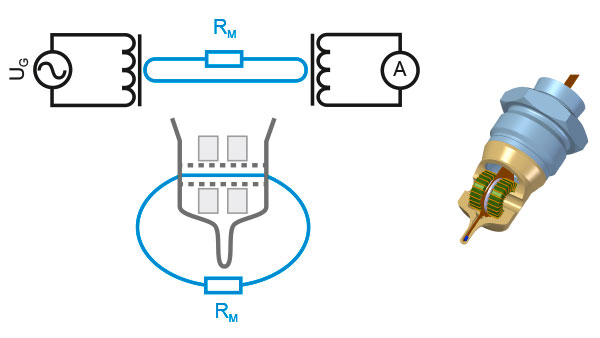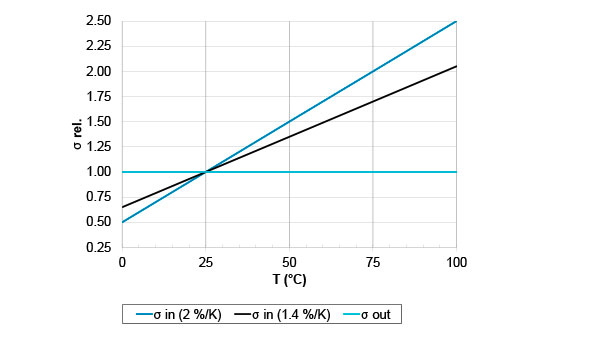堡盟电导率变送器专为介质分离与分析而设计,适用于食品饮料及水处理行业的诸多应用。它在精度和图形化显示方面有着非常突出的优势。
Operating principle of an inductive conductivity sensor Baumer AFI
Differentiation of conductive and inductive technology
The classic set up of conductive conductivity sensors, whose electrodes are in galvanic contact to the medium to be measured, is limited by the point at which high ion concentrations may result in the so-called polarization effect. This can constitute an additional resistance, distorting the measurement result. Similarly, deposits (e.g. sodium hydroxide) can create insulating layers that make conductive conductivity measurement impossible.
For applications with high ion concentrations, such as leaches and acids with conductivity values in the range of 100 mS/cm and when there is a risk of deposits, inductive technology offers the only reliable conductivity measurement and thus reliable control of processes. However, the inductive measurement principle is not suited for measuring very small conductivity values. The smallest measurement range is 500 µS/cm (0.5 mS/cm); in this range precise measurements of around 50 µS/cm can still be carried out.
Design of the inductive conductivity sensor AFI

The sensor element with a seamless PEEK housing contains two ring core coils that act as two virtual transformers arranged in series. The first primary winding is fed by an oscillator in the kilohertz range. The liquid loop that is created by the current measuring passage through the interior of the two ring core coils and the surrounding area connects the secondary side of the first transformer to the primary side of the second transformer. This connection can be considered a common winding of both transformers. The secondary winding of the second transformer is connected to a galvanometer. The volume of the liquid resistance RM results in an associated current measurement value. Using a simple calculation rule (Ohm’s law), this value together with the known oscillator voltage UG is transformed into the conductance value GM to be output.
The sensitivity of the galvanometer must be adjusted for different conductance value ranges. The user can do this by setting freely defined measurement ranges that can be selected during operation by activating control inputs.
The inductive measurement principle is not reliant on the movement of liquids in the current measuring passage. Nevertheless, it is recommend to align the channel in the direction of the flow to achieve better cleaning results. The symmetrical design of the channel accommodates both flow directions without the risk of clogging by media components.
A precise and highly responsive Pt100 temperature sensor is integrated into the tip of the sensor element. The temperature of the medium measured by this is available as a measuring signal and is used in addition to the physical temperature compensation of the raw conductivity value.
温度补偿
液体的电导率一般与温度密切相关。温度每升高1K,许多水溶液的电导率会增加2%。为了测量结果的可比性,测量设备会将直接测得的电导率换算成参考温度下对应的电导率(一般为25 °C)。此外,AFI变送器还允许温度系数以%/K为单位直接输入。如无需进行温度补偿,温度系数必须定为0%/K。非线性温度系数可额外使用一个二次项来加以定义。
